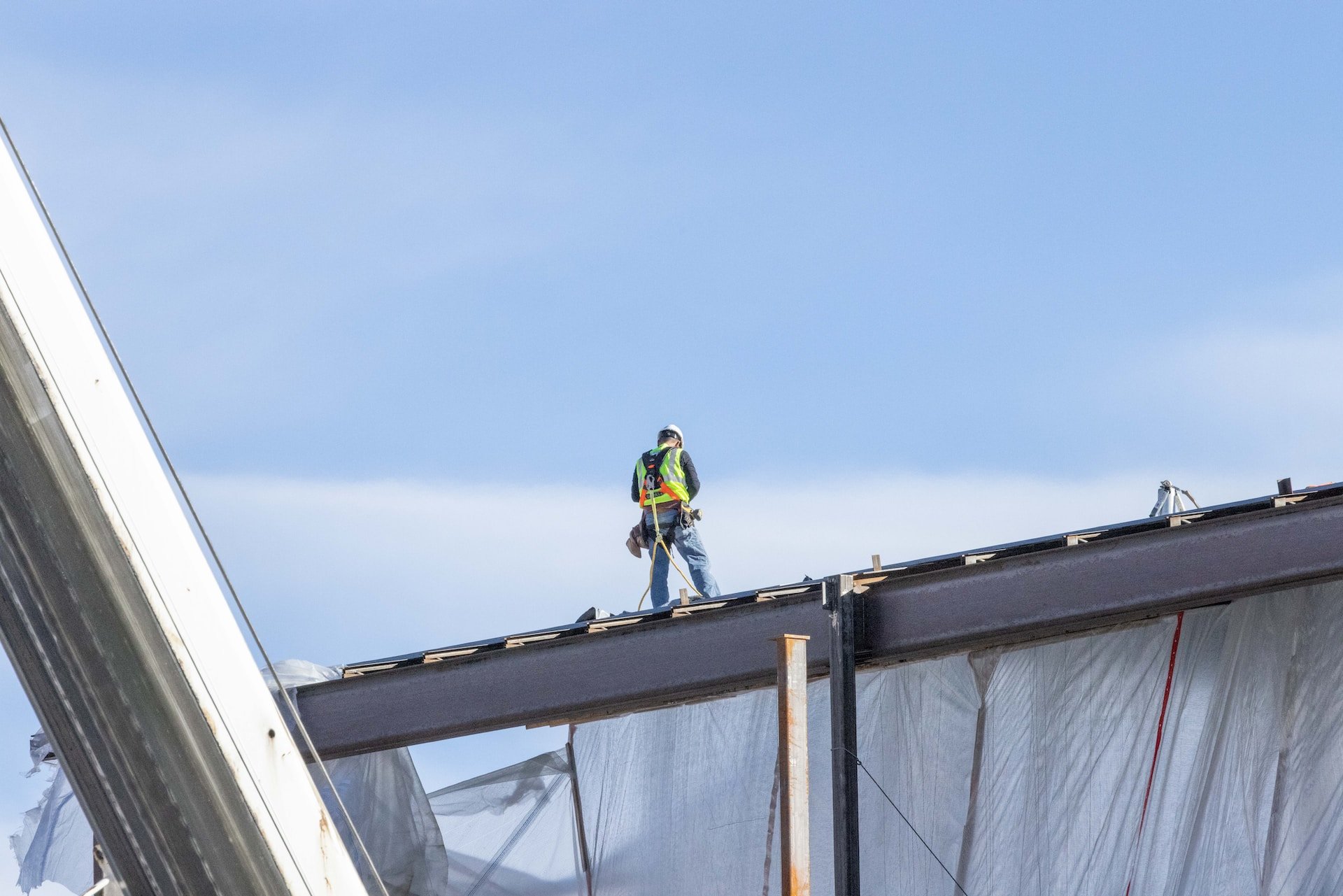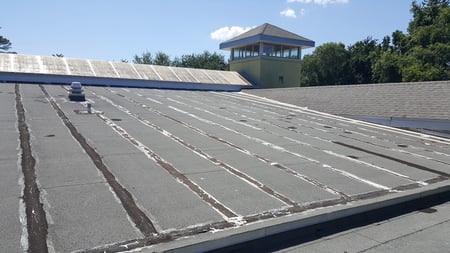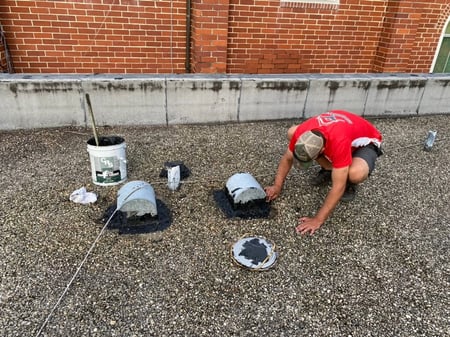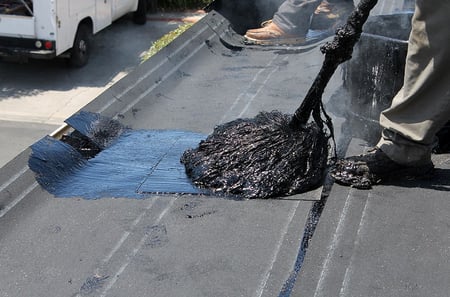
In the realm of commercial roofing systems, where durability, weather resistance, and longevity are paramount, one solution has stood the test of time: Built-Up Roofing. Often recognized as the "tar and gravel" roofing method, BUR has been a reliable choice for decades, offering a tried-and-true approach to creating resilient, multi-layered roofing systems.
With its intricate layering of bitumen, reinforcing fabrics, and protective surfacing, BUR has carved a niche for itself in the roofing industry, particularly for commercial and industrial structures with flat or low-sloped roofs. Here at RoofCrafters, we’ve been installing built-up roofing systems for our friends with commercial properties for decades, and we’ve seen that just as with fashion and technology, roofing trends seem to come and go over the years; but not BUR.
This specific system is always in style and remains one of the most popular roofing choices on the market today. So, what makes it so special? Gee, I’m glad you asked! In just a few short moments, you’ll learn exactly what built-up roofing is, what it’s made of, its advantages, and the types of properties that BUR is best used on. So, without further ado, let’s jump right in!
What Is Built-Up Roofing?

Built-up roofing (BUR), often referred to as "tar and gravel roofing," is a tried-and-true roofing system commonly found on commercial and industrial buildings. It's known for its durability and ability to create a waterproof, watertight surface. BUR is made up of multiple layers of bitumen (asphalt or coal tar) and reinforcing fabrics like fiberglass or felt, which are alternately layered and adhered together to form a strong, cohesive roofing membrane.
Key Components of a Built-Up Roofing System
- Base sheet: The initial layer, typically an asphalt-saturated felt or fiberglass mat, provides a stable foundation.
- Bitumen layer: Hot bitumen (asphalt or coal tar) is applied over the base sheet, creating a waterproofing layer.
- Reinforcing fabric: A layer of fiberglass or organic felt adds strength and stability.
- Bitumen interply sheets: Additional layers of bitumen-saturated felt or fiberglass, known as "plies," are added for extra reinforcement.
- Surfacing: The top layer can be gravel, mineral granules, or a reflective coating, providing UV protection and weather resistance.
Advantages of Built-Up Roofing
BUR has many amazing advantages and great qualities that come with investing in the system, which include:
Durability: Known for longevity, BUR systems withstand weathering and wear thanks to their multi-layered construction.
Fire resistance: Especially those with coal tar, offer excellent fire resistance, ideal for buildings with strict fire codes.
Weatherproofing: The bitumen layers create a waterproof barrier, handling various weather conditions effectively.
Thermal performance: The layers provide good thermal insulation, helping regulate building temperature.

However, there are also some considerations...
1. Weight: The multiple layers make BUR systems heavy, possibly requiring structural reinforcement.
2. Installation complexity: Installing BUR involves hot asphalt or tar, necessitating skilled labor and specialized equipment.
3. Maintenance: Over time, maintenance like re-sealing or re-surfacing might be needed to maintain performance.
In recent years, newer roofing technologies such as single-ply membranes (EPDM, TPO, PVC) have gained popularity due to their lighter weight, ease of installation, and comparable durability. However, BUR still has its place in the roofing industry, particularly in applications where its advantages align with building requirements.
When Is Built-Up Roofing Best Used?
Built-up roofing (BUR) systems are best suited for specific types of properties and situations where their unique characteristics align with the building's needs. Here are some types of properties and situations where BUR is commonly used:
- Commercial and industrial buildings: Preferred for large structures due to durability and lifespan.
- Low-sloped roofs: Suited for low slopes where water drainage is slow.
- High-traffic roofs: Robust enough for roofs with heavy foot traffic and equipment installations.
- Fire-resistant requirements: Excellent for buildings needing high fire resistance, such as industrial plants.
- Extreme weather conditions: Resilient in regions with harsh weather, from extreme temperatures to heavy precipitation.
- Historic buildings: BUR can blend aesthetically with older structures, preserving traditional roofing methods.
- Rooftop gardens or green spaces: Provides a sturdy foundation for gardens or green spaces.
- Reflective coatings: Can be paired with reflective coatings for improved energy efficiency in warmer climates.

The choice of roofing system should always take into consideration the specific needs of the property, local climate, budget, and other relevant factors. Consulting with roofing professionals or experts can help determine the best roofing solution for a particular project.
Is Built-Up Roofing a Good Choice for My Commercial Property?
Built-Up Roofing stands as a time-tested and durable roofing solution, appreciated for its resilience, weatherproofing capabilities, and fire-resistant properties. With its multiple layers of bitumen and reinforcing materials, BUR systems excel in protecting low-sloped and flat roofs, particularly in commercial, industrial, and high-traffic environments. Its ability to withstand extreme weather conditions, foot traffic, and potential hazards makes it a reliable choice for structures seeking long-term performance.
As you now know, BUR roofing offers numerous advantages, including its suitability for fire-sensitive locations and historic preservation projects, but the decision to use this system should be made in consideration of various factors. Such factors include the property's specific requirements, budget constraints, and available roofing alternatives like single-ply membranes. Engaging with roofing experts can guide property owners in selecting the most appropriate roofing solution that aligns with the needs of their structure, climate, and intended use.
Built-Up Roofing's legacy lies in its ability to provide dependable protection for structures across a spectrum of industries and contexts. As roofing technologies continue to evolve, BUR remains a steadfast option for those seeking a robust, time-honored solution for their roofing needs. If you’re interested in BUR for your commercial property and are looking for an expert opinion, be sure to hit the “Schedule an Inspection” button down below, and one of our roofing professionals will meet with you at your earliest convenience to discuss your built-up roofing possibilities!
My name is David Toth and I am the lead estimator in North Florida with RoofCrafters Roofing. Originally from New Brunswick, I have called Florida home for the past 47 years. I enjoy cooking along with traveling to different historical areas in Florida when I have free time.



